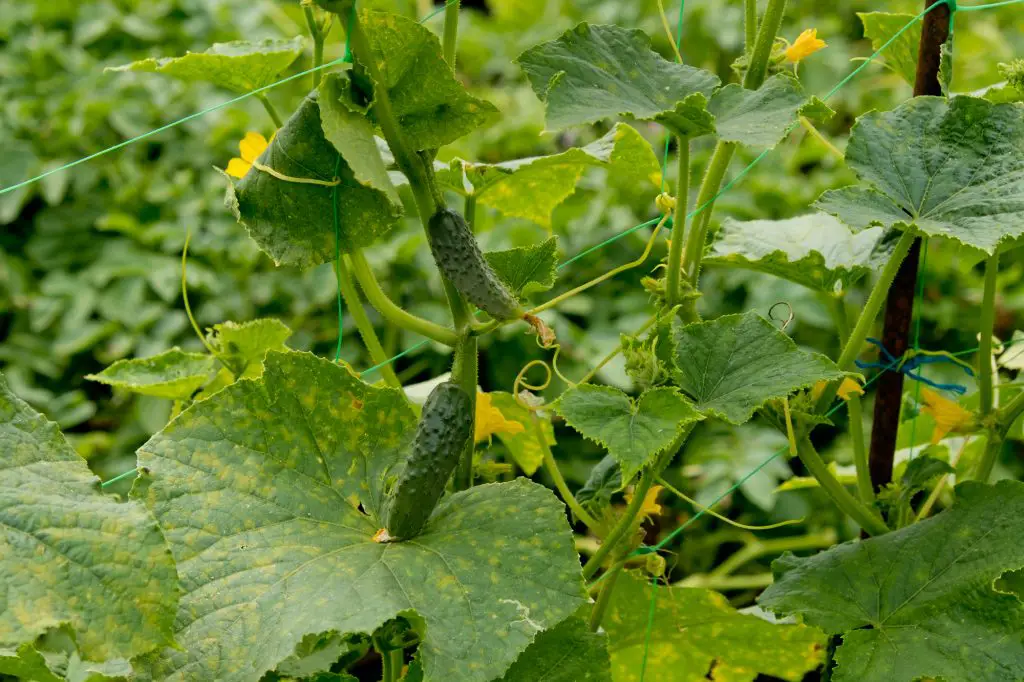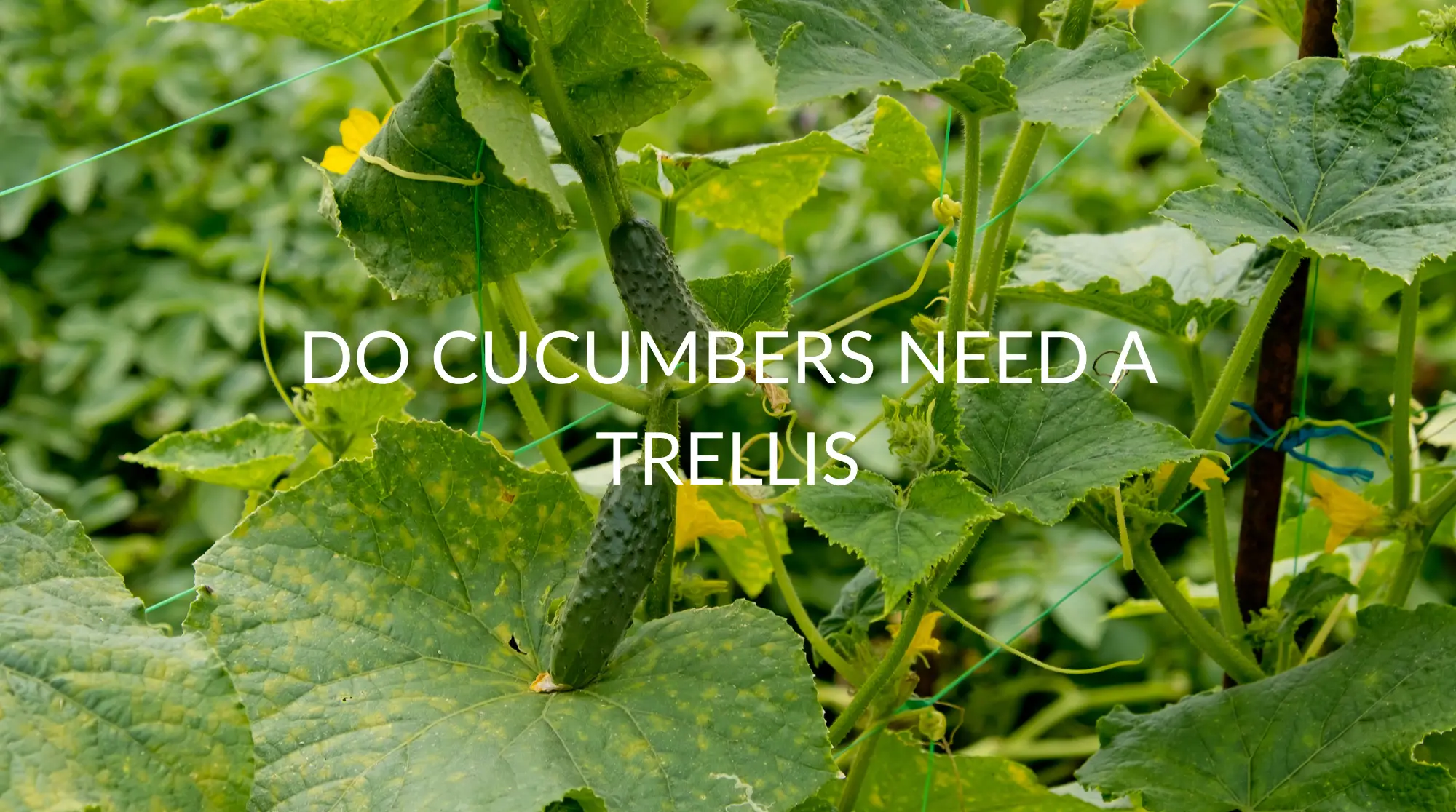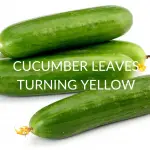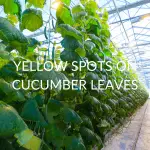If you ask any seasoned gardener, they will tell you that cucumbers are one of the most versatile vegetables in the garden. Not only are they delicious and nutritious, but they can also be used in a variety of dishes, from salads to soups. However, cucumbers can be a bit finicky to grow, and one of the biggest challenges is providing them with the proper support.
Without a trellis or some other type of support, cucumbers will sprawl out on the ground, making them more susceptible to pests and diseases. Additionally, cucumbers that are allowed to sprawl will produce fewer fruits than those that are supported. For these reasons, it is generally recommended that cucumbers be grown on a trellis.
The good news is that cucumbers are relatively easy to train onto a trellis. Simply tie the main stem to the trellis with soft twine or strips of cloth, and allow the plant to grow upwards. As the plant grows, continue to tie new stems to the trellis, keeping the plant evenly distributed. With a little bit of effort, you can enjoy a bountiful harvest of healthy cucumbers.
Benefits Of Growing Cucumbers on a Trellis
Cucumbers are a versatile and popular vegetable that can be enjoyed in a variety of ways. When grown on a trellis, cucumbers have several distinct benefits.
Less Likely to Rot or Become Moldy
When cucumbers are lying on the ground, they are in contact with moist soil, which can lead to rot. Mold can also form more easily when cucumbers are in contact with the ground because there is less air circulation. Trellising cucumbers helps to keep them off the ground and improve air circulation, which reduces the risk of rot and mold.
Additionally, trellised cucumbers are less likely to be bruised or damaged, which can also lead to rot and mold. Consequently, growing cucumbers on a trellis is a great way to reduce the risk of rot and mold.

Less Likely to Be Damaged By Pests or Diseases.
When cucumbers are grown on the ground, they are more susceptible to damage from pests and diseases. Snails and slugs can easily climb up the stems and leaves to reach the fruit, and cucumbers are also susceptible to fungal diseases that thrive in damp conditions. By growing cucumbers on a trellis, however, these problems can be greatly reduced.
The fruit will be out of reach of most pests, and the increased air circulation will help to prevent fungal diseases from taking hold. In addition, trellised cucumbers are less likely to suffer from bruising or other damage as they will not be in contact with the ground. As a result, growing cucumbers on a trellis is an ideal way to reduce damage from pests and diseases.
Straighter Fruits With Fewer Blemishes
Growing cucumbers on a trellis results in straighter fruits with fewer blemishes for several reasons. First, cucumbers that are allowed to grow freely on the ground are more likely to be damaged by insects and other pests. Second, cucumbers that grow on the ground are more likely to come into contact with dirt and other contaminants.
Finally, cucumbers that are allowed to grow freely on the ground are more likely to become misshapen due to the weight of the fruits. By contrast, cucumbers that are grown on a trellis are protected from these sources of damage and contamination. Additionally, the weight of the fruits is evenly distributed along the length of the cucumber, resulting in a straighter fruit.
Easier to Harvest
If you’re growing them in your garden, you may have noticed that they can be difficult to harvest. That’s because cucumbers are a climbing plant, and their fruits can be hard to reach if they’re allowed to sprawl on the ground.
Luckily, cucumbers can easily be trained to grow up a trellis, making them much easier to harvest. By supporting the plant’s stems, a trellis allows cucumbers to grow vertically, creating long, evenly-spaced fruits that are easy to pick.
Require Less Space Than Those Grown on the Ground
Cucumbers are climbing plants, meaning they will naturally grow up and around any object in their environment. When left to their own devices, cucumbers will often vine themselves along the ground, taking up a large amount of space as they meander about. However, when cucumbers are provided with a trellis to climb, they will quickly head skyward, leaving the ground below them open and unencumbered.
What Happens If You Don’t Trellis Cucumbers?
Trellising cucumbers is a way of growing them vertically on a support system rather than letting them sprawl on the ground. There are a few reasons why this is beneficial.
The Cucumbers Can Become Misshapen Due to Gravity and Weight
When cucumbers are allowed to grow without support, they can become misshapen due to the force of gravity and their own weight. The fruits can end up being bent, twisted, or curved, and the overall quality of the cucumber can be affected. Trellising cucumbers helps to avoid this problem by providing support for the fruits as they grow.
By training the cucumbers to grow up a trellis or other support structure, you can ensure that they stay straight and healthy. Not only does this improve the appearance of the cucumbers, but it can also make them easier to harvest.
More Susceptible to Pests and Diseases
Cucumbers are a type of vine crop that need support to grow properly. If you don’t trellis cucumbers, they’ll grow along the ground, which makes them more susceptible to pests and diseases. For example, cucumbers that touch the ground are more likely to be affected by powdery mildew.
This is a common fungal disease that causes the leaves of the plant to turn white and eventually die. In addition, cucumbers that sprawl on the ground are more likely to be eaten by pests like slugs and snails.
Trellising cucumbers helps to keep them off the ground, making them less vulnerable to both pests and diseases. In addition, cucumbers grown on a trellis are generally easier to harvest. As a result, trellising is an important part of growing healthy cucumbers.
The Flavor of the Cucumbers Can Be Affected
Cucumbers are a type of vine plant that require support as they grow. If you don’t provide a trellis or some other form of support, the cucumbers will grow along the ground. This can affect the flavor of the cucumbers because they will come into contact with dirt and other debris as they grow.
The flavor of cucumbers is also affected by how much sunlight they receive. If they don’t get enough sunlight, they will tend to be more bitter. When choosing a location for your cucumber plants, make sure it is in an area that gets plenty of sunlight. You should also keep an eye on the leaves of the plants and remove any that are yellowing or dying.
Cucumbers That are Not Trellised Can Take Longer to Mature
A cucumber that is not trellised can take up to 10 days longer to mature than one that is. The main reason for this is that the plant will be trying to support the weight of the fruit as it grows, which can cause the stem to weaken and break.
By contrast, cucumbers that are trellised tend to be cleaner and easier to manage, as well as less prone to disease. In addition, the fruits of a trellised cucumber are typically firmer and more uniform in shape.
Cucumbers Will Be More Likely to Rot
When cucumbers are not trellised, they are more likely to rot. The weight of the cucumbers pulls them down, causing them to touch the ground where they can come into contact with bacteria and fungus. In addition, the cucumbers are more likely to be damaged when they are not supported by a trellis.
The stem can break, and the cucumbers can be bruised, making them more susceptible to rot. Trellising cucumbers also makes it easier to monitor their progress and harvest them when they are ripe. As a result, cucumbers that are not trellised are more likely to rot and be damaged.
What Type Of Trellis Is Best For Cucumbers?
When it comes to cucumbers, not all trellises are created equal. For instance, cucumbers that are grown for pickling are typically shorter and stubbier than those grown for slicing. As a result, they require a different type of support. The best type of trellis for pickling cucumbers is one that is tall enough to support the plant but not so tall that the fruits are out of reach.
Cucumbers that are grown for slicing, on the other hand, can be much taller. As a result, they require a sturdier trellis that can support their weight without sagging.
Single Trellis
A single trellis for cucumbers is a framework that is used to support the cucumber plant as it grows. The trellis will typically have two main parts: the main support structure, which can be made of wood, metal, or plastic, and the mesh netting or plastic sheeting that is used to actually support the cucumber plant.
The mesh netting or plastic sheeting is usually attached to the main support structure using zip ties, hooks, or some other type of mechanical fastener.
The cucumber plant itself is then trained to grow up the trellis by loosely tying the main stem to the mesh netting or plastic sheeting using string, yarn, or strips of cloth. As the cucumber plant grows, it will produce tendrils that will grip the support material and help to keep the plant in place.
Double Trellis
A double trellis for cucumbers is two T-shaped structures placed in the cucumber bed, spaced about 6 feet apart. Each trellis should be 6 to 8 feet tall, with the crosspieces at the top being 3 to 4 feet long.
The trellises are placed in the bed so that the cucumber vines will grow up and over them, providing support for the fruits as they mature. The double trellis system provides better support than a single trellis and also allows for more vines to be planted in a given space.
This can be particularly helpful if you are growing cucumbers for pickling, as multiple vines can produce a large quantity of fruits. Double trellising also helps to keep the cucumber fruits clean, as they are less likely to come into contact with dirt or other debris when they are suspended off the ground.
Wooden Trellis
A trellis is an essential piece of equipment for any cucumber grower. By training cucumbers to climb, a trellis helps to increase yield while also making the cucumbers easier to pick and preventing damage to the fruit.
There are many different types of trellises, but a wooden trellis is a popular choice because it is relatively inexpensive and easy to construct. To build a basic wooden trellis, you will need four eight-foot boards, a drill, screw eyes, and twine.
First, drill four holes in each board, spacing them evenly apart. Next, screw the screw eyes into each hole. Finally, tie the twine between the screw eyes to create a grid.
Once the trellis is complete, simply plant your cucumber seedlings at the base and train them to climb up the twine. With a little care and attention, your cucumbers will thrive and produce an abundance of fruit.
Metal Trellis
A metal trellis for cucumbers is a frame made of metal bars or rods that is used to support cucumber plants as they grow. The cucumbers are trained to grow up the trellis, which keeps them off the ground and makes them easier to harvest. Metal trellises are often made of steel or aluminum, and they can be either permanent or temporary.
Permanent trellises are typically installed before planting, while temporary ones can be set up as needed. Metal trellises are an important tool for growers who want to maximize their yield and produce high-quality cucumbers.
Freestanding Trellis
A freestanding trellis is a support structure that is not attached to a building or any other kind of structure. Freestanding trellises are often used in gardens and yards to support climbing plants. Many gardeners use them to support cucumbers, as cucumbers are known to be prolific climbers. A trellis for cucumbers can be made out of many different materials, including wood, metal, or plastic.
The most important thing to consider when choosing a material for your trellis is whether it will be strong enough to support the weight of the cucumbers as they grow.
Attached Trellis
An attached trellis is a support structure that is attached to a cucumber plant in order to provide additional support for the plant as it grows. The trellis helps to keep the plant upright and prevents it from falling over, which can damage the fruit. The trellis also helps to promote better airflow around the plant, which can help to prevent diseases.
In addition, the trellis can provide a place for the cucumbers to climb, making them easier to harvest. Attached trellises are typically made from metal or plastic and can be purchased from most gardening stores.
How To Grow Cucumbers On A Trellis
- Select a cucumber variety that is well-suited for trellising. Some varieties to consider include ‘Bushy’ cucumbers, ‘Dwarf White Icicle’ cucumbers, and ‘Patio Pik’ cucumbers.
- Choose a location for your trellis that receives full sun exposure for at least six to eight hours per day. The soil in this area should be well-drained and rich in organic matter.
- Build or purchase a trellis that is at least 6 feet tall and 8 feet wide. Place the trellis in the prepared location.
- Sow the cucumber seeds in the seed-starting mix inside biodegradable peat pots. Place the pots under grow lights or in a warm, sunny location.
- Water the cucumber seedlings regularly, keeping the soil moist but not soggy.
- When the cucumber seedlings have two to three true leaves, transplant them into the prepared garden bed near the trellis. Space the plants 12 to 18 inches apart.
- Water the cucumber plants deeply and regularly, providing at least 1 inch of water per week.
- When the cucumber plants have reached a height of 6 to 8 inches, begin training them up the trellis using soft twine or strips of old nylon stocking material. Gently tie the stems to the trellis, being careful not to damage the plant.
- Harvest the cucumbers regularly to encourage continued production. Pick them when they are 6 to 8 inches long and still have a glossy appearance.
- Enjoy your homegrown cucumbers fresh, in salads, or sliced and pickled.
FAQ
Is It Better To Grow Cucumbers On A Trellis Or On The Ground?.
Trellis-grown cucumbers have a number of advantages. They take up less space than ground-grown cucumbers, so they’re ideal for small gardens or cramped growing areas. They’re less likely to be damaged by pests or diseases since they’re off the ground and away from potential sources of infection. Trellised cucumbers are easier to harvest since you can simply reach up and pluck them off the vine.
However, there are also a few downsides to growing cucumbers on a trellis. It can be difficult to keep the vines evenly distributed across the trellis, which can result in uneven fruit development. Trellis-grown cucumbers are more susceptible to wind damage than ground-grown cucumbers, so they may need additional support in high-wind areas. Overall, though, trellis-grown cucumbers have more advantages than disadvantages – making them the ideal choice.
How Tall Should A Cucumber Trellis Be?
When it comes to cucumber trellises, one size does not necessarily fit all. The ideal height for a cucumber trellis will depend on the variety of cucumbers you are growing, as well as the climate and growing conditions in your area.
For example, in warm-weather climates, cucumbers can vine up to 10 feet tall, while in cooler climates, they may only reach 4 or 5 feet. In terms of the specific varieties of cucumbers, some varieties are better suited to vertical trellising than others.
If you are unsure which variety of cucumber to grow, your local cooperative extension office can offer guidance. Once you have selected a variety of cucumbers and determined the ideal height for your trellis, you can begin constructing your cucumber trellis. There are many different designs to choose from, but one of the simplest is an A-frame trellis.
How Do You Get Cucumbers To Climb A Trellis?
Climbing cucumbers are a great way to save space in the garden, and they also make for an attractive display. If you want your cucumbers to climb a trellis, there are a few things you need to do. First, choose a Trellis that is tall enough and strong enough to support the weight of the cucumbers.
Next, plant your cucumbers at the base of the trellis, making sure that each plant has at least two or three tendrils. Once the plants have begun to grow, gently guide the tendrils up the trellis using soft ties or strips of cloth.
Be careful not to damage the stems. Finally, give the plants plenty of water and fertilize them monthly. With a little care and attention, your cucumbers will soon be climbing their way to the top.
Conclusion
When it comes to cucumbers, there are two main ways of growing them: on the ground or on a trellis. Both have their pros and cons, but overall, cucumbers grown on a trellis are superior to those grown on the ground. One of the main advantages of growing cucumbers on a trellis is that it allows for better air circulation.
This is important because cucumbers are susceptible to fungal diseases if they don’t have good airflow. Growing them on a trellis also means that the fruits will be off the ground, which will help to keep them clean and free from dirt and pests. Additionally, cucumbers grown on a trellis tend to be straighter and more uniform in shape than those grown on the ground.
This is because they’re supported by the trellis, so they don’t get bending or misshapen. Finally, cucumbers grown on a trellis are generally easier to harvest than those grown on the ground.
This is because you can simply reach up and pick them, rather than having to bend down and search for them among the leaves. Overall, there are many good reasons to grow cucumbers on a trellis instead of on the ground.







